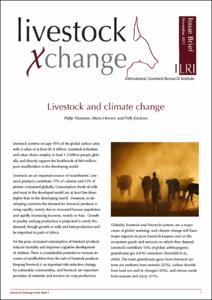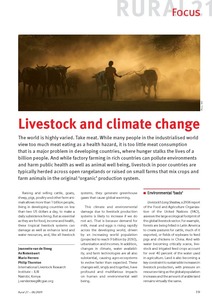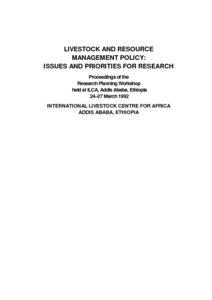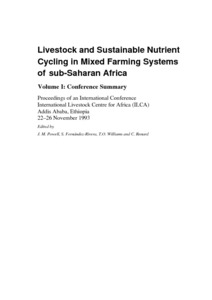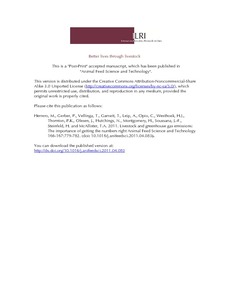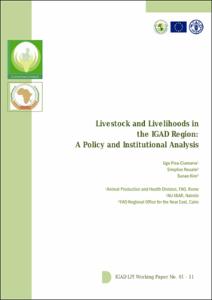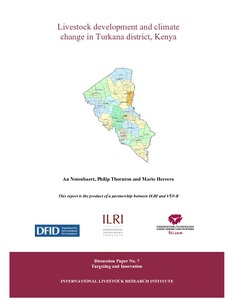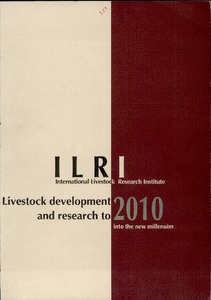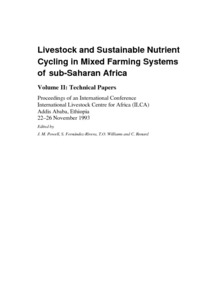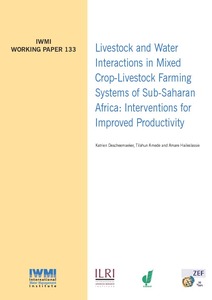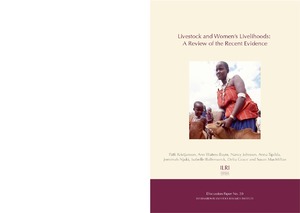terras de pastagem
AGROVOC URI:
Livestock and climate change
Raising and selling farm animals allows more than 1 billion people to make a daily subsistence living. But as essential as they are for food, income and health, these tropical livestock systems can damage as well as enhance land and water resources, and, like all livestock systems, they generate greenhouse gases that cause global warming. Research is helping poor livestock communities adapt to climate change, find sustainable ways to intensify their production, and, where possible, adopt methods to mitigate livestock-induced climate change.
Livestock and resource management policy: Issues and priorities for research. Proceedings of the research planning workshop
This workshop was convened to help ILCA develop priorities and plan for research over the five year period, 1994-1998. The purpose of the workshop was to identify issues and priorities for research and training in the general areas of livestock and resource management policy, appropriate methodologies for research in these priorities, the role of ILCA in policy research and opportunities for collaboration with national and international institutes.
Livestock and sustainable nutrient cycling in mixed farming systems of sub-Saharan Africa. Volume I: Conference summary
This document summarises the major discussions, findings and recommendations of the conference convened by ILCA and its cosponsors to bring together national and international experts in livestock nutrition and management, ecology, agronomy, soil science and socio-economics to address fundamental issues of nutrient balances, agricultural productivity and the well being of the people, livestock and environment of sub-Saharan Africa.
Livestock and greenhouse gas emissions: The importance of getting the numbers right
Estimates of global greenhouse gases (GHG) emissions attributable to livestock range from 8 to 51%. This variability creates confusion among policy makers and the public as it suggests that there is a lack of consensus among scientists with regard to the contribution of livestock to global GHG emissions.
Livestock development and climate change in Turkana District, Kenya
The main purpose of the study presented here is to shed some light using simple and aggregated methods on the following question: In view of the expected climate change, is there also a long-term perspective for livestock development in the area, i.e. will the Turkana ecosystem be able to sustain livestock production during the next few decades?
Livestock development and research to 2010: Into the new millennium
Livestock and sustainable nutrient cycling in mixed farming systems of sub-Saharan Africa. Volume II: Technical papers. Proceedings of an international conference
Achieving sustainable increases in agricultural production in sub-Saharan Africa is both a regional and a worldwide concern. High human and animal population densities in some areas have surpassed
land-carrying capacities causing environmental degradation and undermining the long-term stability of these production systems. In attempts to meet the increasing food demands of larger populations,
farmers are cultivating more land permanently, grazing lands have diminished and many traditional farming practices that formerly allowed land to rejuvenate are disappearing.
Livestock and water interactions in mixed crop-livestock farming systems of sub-Saharan Africa: interventions for improved productivity
In sub-Saharan Africa (SSA), the increasing competition for water between various sectors is aggravated by growing demands for water, climate change and environmental degradation. One of the major consumers of water is livestock keeping, which is an important livelihood strategy for smallholder farmers in Africa. The water consumption for livestock production is currently increasing with the growing demands for livestock products. On the other hand, current low returns from livestock, limit its contribution to livelihoods, threaten environmental health and aggravate local conflicts.
Livestock and Women's Livelihoods: A Review of the Recent Evidence
This paper synthesises evidence of the contributions that livestock make to the livelihoods of poor women in sub-Saharan Africa and South Asia and identifies factors that enhance or constrain livestock-related opportunities for women. We apply a gender lens to three livestock-related pathways out of poverty—securing, building and safeguarding livestock assets; increasing and
Livestock Asia: A strategy and action plan for research for poverty reduction
This strategy and action plan has been co-produced by over 50 organizations and individuals. We hope that it will be of value to all those interested in reducing poverty through livestock research and development in South and South-East Asia and China. In particular we hope that it will
be used by researchers, policymakers, aid specialists and development practitioners to inform the development of their policies, programs and projects.

